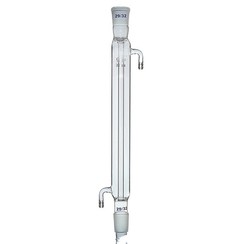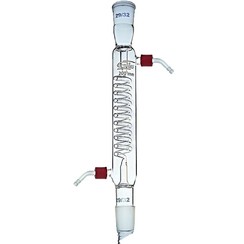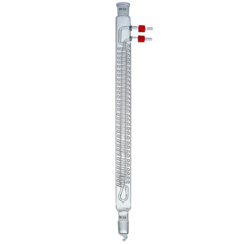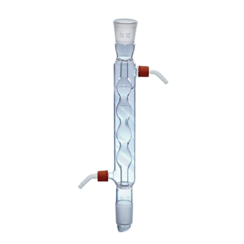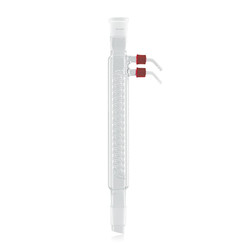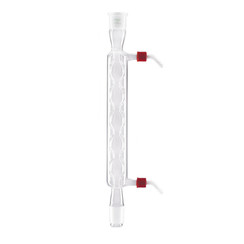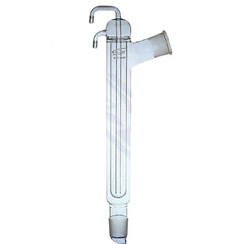You have no items in your shopping cart
Condensers
Laboratory coolers are devices used in a chemical laboratory to condense gases and vapors. Different types of coolers are used depending on the intended use and working temperature. The cooling effect is based on heat transfer processes on the cooling surfaces of the cooler. In addition to the coolant temperature, an important criterion for the cooling effect is the size of the cooling surface, as the amount of heat that can be transferred is proportional to the surface area of the cooler. The cooling surface is an important design feature of a cooler. Large cooling surfaces are achieved by special shapes such as cooling coils.
In terms of application, a distinction is made between product coolers and reflux coolers. In the first case, the condensate formed during the distillation is discharged as a product. In contrast, reflux condensers are designed to condense the vapors and return them to the distillation flask.
Product coolers, such as Liebig coolers or serpentine coolers, are used “descending” to separate the distillate, which is collected in a receiving vessel, possibly using a spin or an Anschütz-Thiele attack.
The Dimroth cooler consists of a cooling coil located in a pipe. This type of cooler has a large cooling surface and is mainly used as a reflux cooler, but can also be used as a product cooler. It is named after Otto Dimroth.

